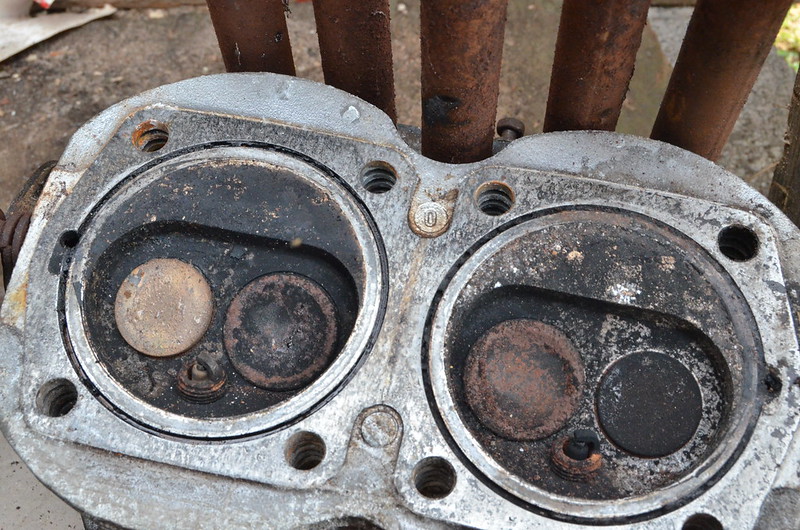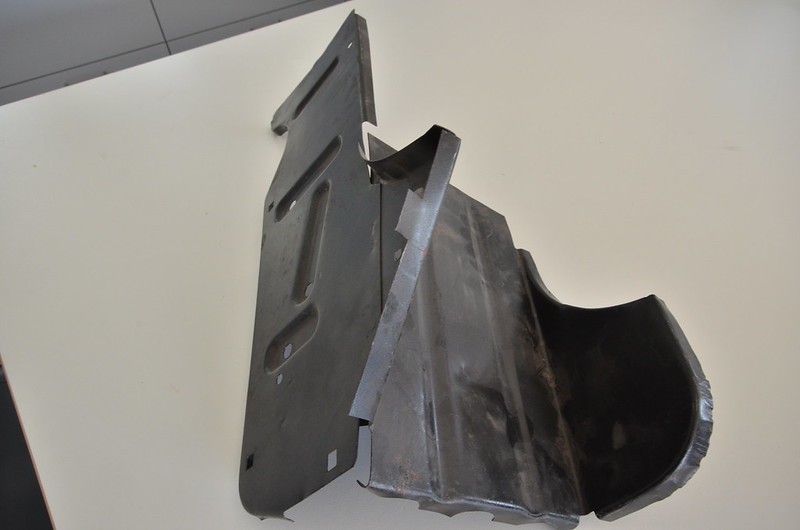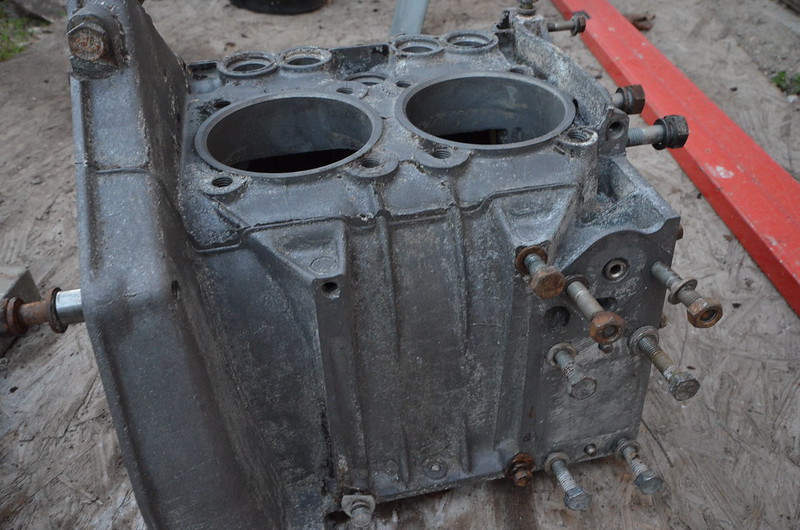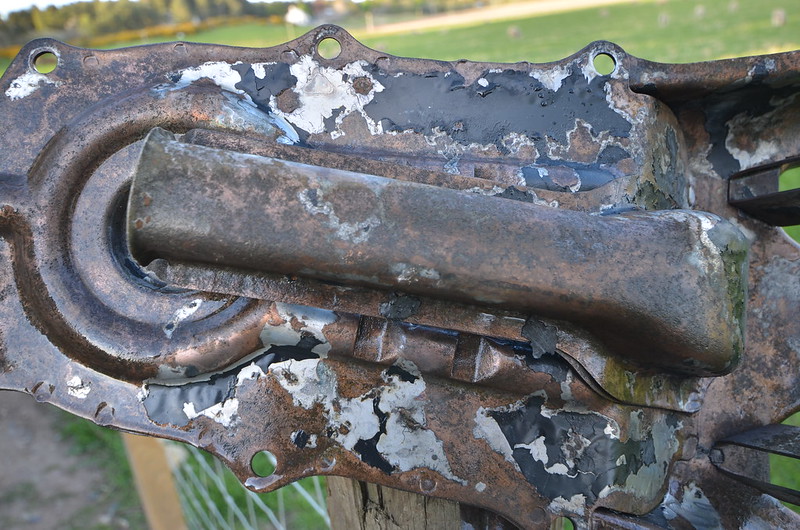This might become another long saga.
As described elsewhere, I just bought this engine, quite cheaply, with not much idea of it's history or mileage. What I do know is that it was in an off-road runabout Fiat 500 for the previous owner's kids...so expect the worst.
Its more or less in bits now, with no traumas or difficulties with that.
I've done some measuring and the results are a bit ambiguous, which is partly because I'm not used to this standard of measuring.
All the bearing journals appear to be within wear limits for standard size but the rear main bearing itself is worn to a copper backing.
The bores have no wear lip and I can make out the swilrls of the original honing in places. Both the bores and the journals have very little in the way of grooving and what is there is very fine.
 FOR_4139 by Peter Thompson, on Flickr
FOR_4139 by Peter Thompson, on Flickr
 FOR_4129 by Peter Thompson, on Flickr
FOR_4129 by Peter Thompson, on Flickr
 FOR_4132 by Peter Thompson, on Flickr
FOR_4132 by Peter Thompson, on Flickr
The head gasket was damaged close to one of the head blow-by holes and the circumferential groove was plugged with grunge. The engine appears to have been running on plugs which are too long. The valves look fine but one cylinder has been running a bit rich
 FOR_4133 by Peter Thompson, on Flickr
FOR_4133 by Peter Thompson, on Flickr
My instincts are that with new bearings and piston rings , this engine could be a cheap and easy rebuild. I plan to let the professionals give me the verdict as we have an excellent precision engine machining shop in Inverness.
I suspect it's actually going to be recommended to be an expensive head skimming, crank regrind and cylinder boring.
In the meantime its down to the hard work of scrubbing it clean.
As described elsewhere, I just bought this engine, quite cheaply, with not much idea of it's history or mileage. What I do know is that it was in an off-road runabout Fiat 500 for the previous owner's kids...so expect the worst.
Its more or less in bits now, with no traumas or difficulties with that.
I've done some measuring and the results are a bit ambiguous, which is partly because I'm not used to this standard of measuring.
All the bearing journals appear to be within wear limits for standard size but the rear main bearing itself is worn to a copper backing.
The bores have no wear lip and I can make out the swilrls of the original honing in places. Both the bores and the journals have very little in the way of grooving and what is there is very fine.
 FOR_4139 by Peter Thompson, on Flickr
FOR_4139 by Peter Thompson, on Flickr FOR_4129 by Peter Thompson, on Flickr
FOR_4129 by Peter Thompson, on Flickr FOR_4132 by Peter Thompson, on Flickr
FOR_4132 by Peter Thompson, on FlickrThe head gasket was damaged close to one of the head blow-by holes and the circumferential groove was plugged with grunge. The engine appears to have been running on plugs which are too long. The valves look fine but one cylinder has been running a bit rich
 FOR_4133 by Peter Thompson, on Flickr
FOR_4133 by Peter Thompson, on FlickrMy instincts are that with new bearings and piston rings , this engine could be a cheap and easy rebuild. I plan to let the professionals give me the verdict as we have an excellent precision engine machining shop in Inverness.
I suspect it's actually going to be recommended to be an expensive head skimming, crank regrind and cylinder boring.
In the meantime its down to the hard work of scrubbing it clean.








